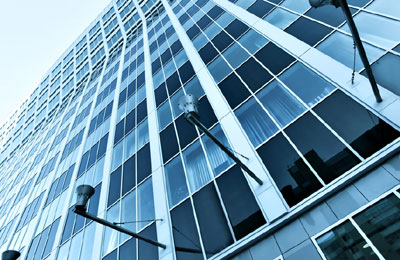
Focus on aesthetics makes buildings less efficient
Dubai, October 4, 2012
Whilst the term ‘Green Buildings’ is relatively new to the Middle East region, the concept itself has been around in the region for generations.
In the early decades of the 20th century, building construction was extremely sustainable due to the lack of availability of centralised electricity and water supply and the use of only local building materials, says Saeed Alabbar of AESG in an article.
However, as the Middle East entered the 21st century, globalisation bought with it many ideas and design concepts from the West and fully glazed, tall skyscrapers began dominating the skylines of the regions major cities. The use of fully glazed and therefore poorly insulated facades can be argued to be an inappropriate design concept for the climate in the region, however the concept was frequently used to showcase modernity in new buildings.
Local building codes have been evolving during this time to incorporate some of the fundamental features of green buildings, predominantly with a focus on insulation.
For example in Qatar, the Gulf Organization for Research and Development has introduced the Global Sustainability Assessment System (previously QSAS), while in Abu Dhabi, developers are mandated to follow the Estidama Pearl Rating System.
“Whilst these are steps in the right direction and local governments should be praised, there are still fundamental issues that need addressing in the industry. Despite all the measures being taken, the construction industry is still unfortunately in a position where buildings being constructed today consume more energy per square meter of floor area than buildings constructed in the 1970’s.
"There are factors which need immediate consideration if the concept of green building is to truly gain momentum in the region,” said Saeed.
Developers need to start talking about a building's energy use intensity, the energy consumption per square metre, rather than comparing buildings to theoretical baselines.
Quality control in the integrity of building envelopes needs major improvement. Some fantastic analysis goes into building designs to select the right glass and insulation but quite often all this good work is lost during construction as insulation and facades are installed poorly with high levels of thermal bridging and air leakage.
In many cases it is not only the contractors but the architects who are at fault. There is really little use in specifying the top of the range insulation if heat is allowed to pass through all the exposed elements of the building. Major savings in energy can be made by addressing this rather simple issue, which would not cost that much to fix.
There is need for the discussion of green buildings to move into the realm of building operation. There is a lot of talk about green design and green construction but the objectives seem to stop once the building is completed and received its rating.
Buildings do not consume energy while they are being built. They only consume energy when they are occupied so this should be the most important phase of a green buildings life and we need to pay more attention to the energy efficiency of building operation and begin reporting the energy use intensity of existing buildings.
Before trying to adopt the highest technology of systems in buildings, developers need to make sure that those systems will be commissioned properly. Far too often when we look at existing buildings we see the most expensive, highest spec building management system turned off because it is not working properly or the operators do not know how to use it. Bridging the interface between construction and operation, through proper commissioning, is essential, particularly now as buildings are becoming more and more high-tech.
Despite these issues, there is a lot of great change that has happened in the industry over the past few years and the government and private sector are both making great strides in the realm of sustainable buildings. However, the industry cannot afford to rest on its laurels and must respond to the fundamental questions of how to really make buildings better.
* Saeed Alabbar is director at AESG, a company which specialises in providing cost effective solutions in reducing the ecological







